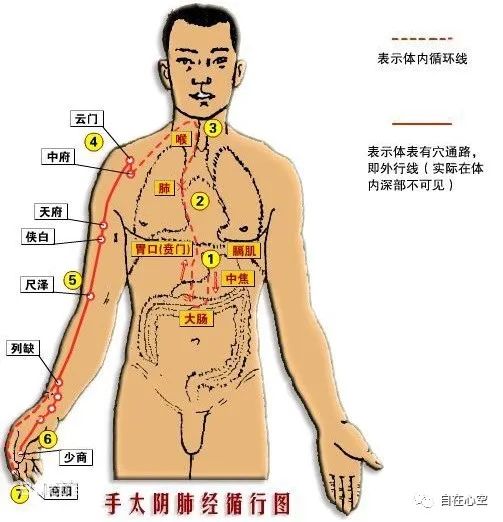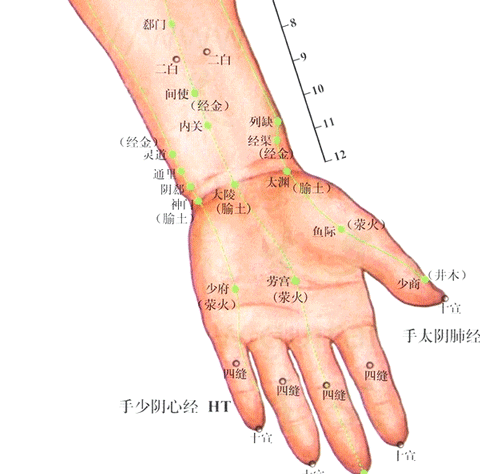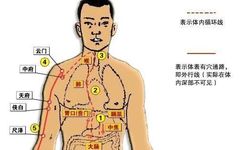Hand Taiyin Luo Vessel is one of the fifteen luo vessels. In the Ling Shu: Jing Mai, it states: “The branch of the Hand Taiyin is called Lieque, originating from the wrist at the point of Lieque, connecting with the Hand Taiyin channel, directly entering the palm, and dispersing into the thenar region.” This means that the luo vessel branches from the Lieque point on the wrist, parallels the Hand Taiyin channel, enters the palm, and disperses in the thenar area. When this vessel is affected, it manifests as heat in the palm and wrist; when deficient, it presents with yawning, shortness of breath, enuresis, and frequent urination.
The network of branches that diverge from the meridians is referred to as luo vessels. Broadly, luo vessels include the fifteen luo, luo vessels, and sun luo, among which there are fourteen branches closely connected to the twelve primary meridians and the Ren and Du meridians, plus the “great luo of the spleen,” collectively known as the fifteen luo. The branches that diverge from the fifteen luo are referred to as luo vessels in a narrow sense; further subdivisions from the luo vessels are called sun luo. The luo vessels, centered on the fifteen luo, also include sun luo, blood luo, and floating luo, serving to connect the meridians, circulate qi and blood, and reflect and treat diseases.
Hand Taiyin Luo Vessel is a component of the luo vessels in a narrow sense, branching from Lieque, running alongside the Hand Yangming channel, and directly entering the palm, facilitating communication between the Hand Taiyin channel and its corresponding Hand Yangming channel, primarily serving to connect the two channels and supplement any deficiencies in the flow of the meridians.

1. Pathway and Main Symptoms of the Hand Taiyin Luo Vessel
The branch of the Hand Taiyin is called Lieque. It originates from the wrist at the point of Lieque, connecting with the Hand Taiyin channel, and directly entering the palm, dispersing into the thenar region.
In excess conditions, there is heat in the wrist and palm;
in deficiency conditions, there is yawning, frequent urination, and enuresis. The Hand Taiyin Luo point can be used for treatment.
2. Hand Taiyin Luo Point – Lieque

In ancient times, the term Lieque referred to lightning and the fissures in the sky, as the Hand Taiyin branches from this point to the Hand Yangming, resembling a fissure in the sky, hence the name Lieque.
Location: On the radial side of the forearm, 1.5 cun above the wrist crease, between the tendons of the brachioradialis and the abductor pollicis longus.
Method: Cross the thumbs of both hands, pressing the index finger of one hand onto the radial styloid of the other hand, where the fingertip reaches.
Main indications: ① External wind headache, stiff neck, cough, asthma, sore throat. ② Mouth deviation, toothache.
Moxibustion: Moxa cones for 3-5 cones; or moxa sticks for 5-10 minutes. Scar moxibustion is not recommended to avoid affecting wrist joint mobility.
Massage: Daily use of the fingertip to rub and press Lieque for 1-3 minutes can treat conditions such as tenosynovitis and headaches.
3. Differences and Similarities Between Luo Vessels and Jing Bie
Luo vessels and jing bie are both branches of the meridians, both serving to strengthen the connection between the interior and exterior channels. The difference is that jing bie primarily governs the interior, has no associated acupoints, and does not have specific diseases; whereas luo vessels govern the exterior, each has a luo point, and has specific diseases associated with them.

